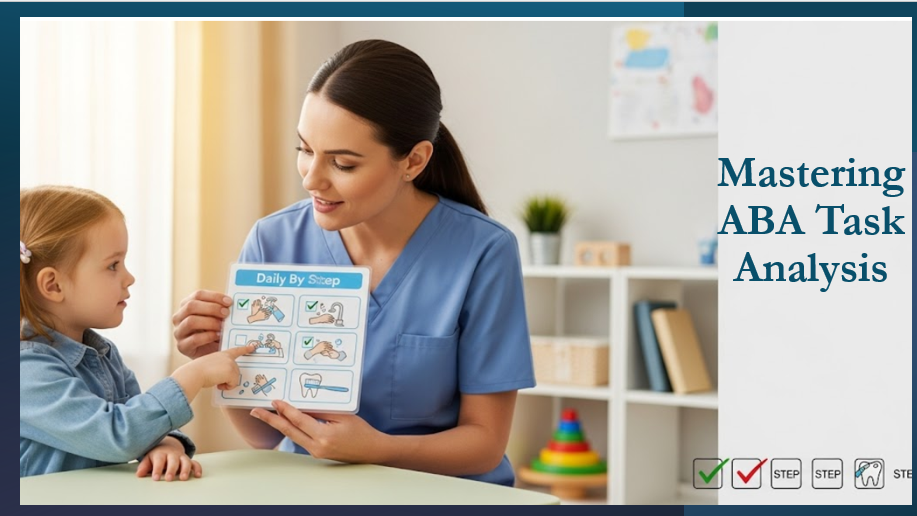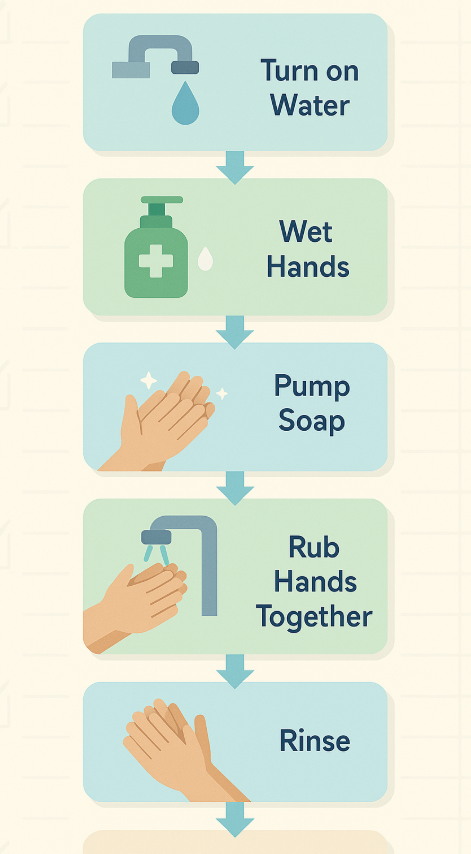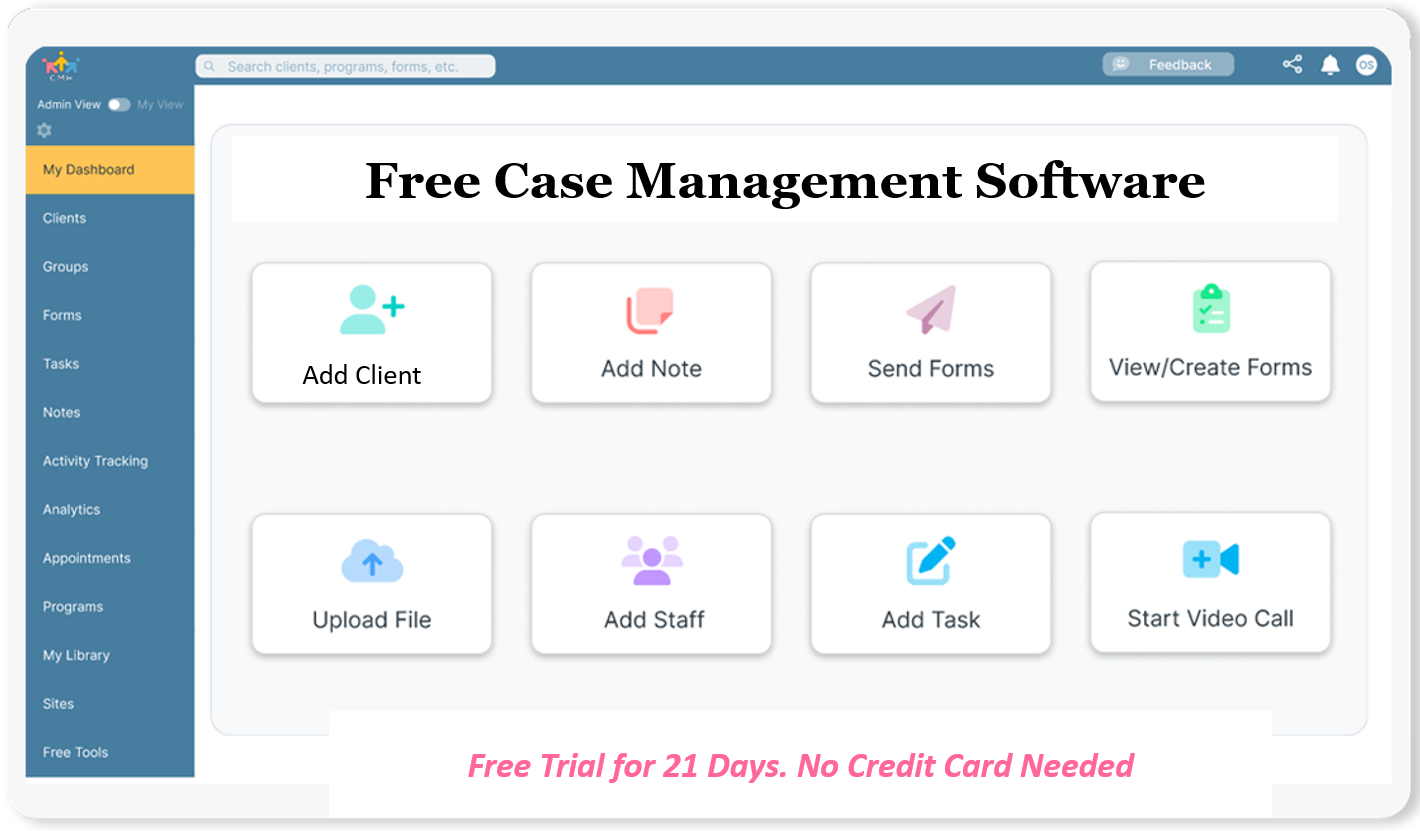Why Most People Do ABA Task Analysis Wrong, And How To Fix It
In this practical guide, you’ll learn how to do task analysis in ABA the right way, from understanding what it is, to creating step-by-step skill breakdowns that are successful in real-life scenarios. If you’ve ever struggled with how to break a behavior into manageable steps or felt unsure whether your analysis was effective, this article is for you.
Today we are going to show you the best ABA Task Analysis.
But first, here is the situation, too many ABA professionals assume an ABA task analysis is just a list of steps.
Some ABA professionals make the mistake of diving into teaching a skill without first breaking it down into its smaller components. They might try to teach “tying shoes” all at once, leading to frustration for both the learner and the instructor. This is where a proper task analysis comes in, it’s the key to turning a daunting task into a series of achievable wins.
Without the right structure, clarity, and chaining method, your ABA task analysis may confuse the learner instead of helping them. And this will be a costly ABA tasks mistake. Why? Because inadequate task analysis leads to inadequate skill acquisition.
This guide will walk you through everything, what task analysis really is, types of task breakdowns, real examples, and how to build your own from scratch. Plus, you’ll get a free downloadable ABA Task Analysis Checklist to simplify your process and improve outcomes for every client.
To help you put these principles into practice immediately, we’ve created a free, downloadable checklist. This checklist will serve as your practical tool to ensure you’re covering all the necessary components of an effective task analysis.

Use Case
Let me tell a story about Sarah. Sarah is a dedicated behavior therapist who was trying to teach a young client, Alex, to brush his teeth. Alex would get frustrated and refuse to participate after just a few attempts. Sarah realized she was teaching the entire sequence at once.
By applying a systematic ABA task analysis, she broke the process down: taking the toothbrush, applying toothpaste, brushing the front teeth, brushing the back teeth, rinsing, and putting the brush away. Each step became a small victory, and Alex, no longer overwhelmed, began to master the skill step by step.
In her next session, Sarah approached Alex with a bright smile. “Today, we’ll try something different,” she said, holding up the toothbrush like a trophy. Alex eyed it suspiciously, but Sarah knelt down to his level. “First, let’s just pick it up together,” she encouraged gently. Seeing his apprehension, she added, “It’s just one little step.” Alex hesitated, then reached out, curiosity piqued. They grasped the toothbrush together, and for the first time, a glimmer of excitement danced in his eyes. “Great job, Alex! You did it!” Sarah cheered, her voice warm and encouraging. “Next, we’ll add some toothpaste,”
Sarah said, slowly squeezing a small amount onto the bristles. “Let’s do this together.” Alex watched intently, his nervousness fading. “It’s like magic,” he whispered, his eyes sparkling with anticipation. Sarah smiled, sensing his growing confidence, “Exactly! Now, let’s spread it on the brush.” With a steady hand, Sarah guided Alex’s movements, demonstrating how to hold the toothbrush. “Just like this,” she said softly, “you want to make sure the bristles touch your teeth.” Alex mirrored her actions, his focus unwavering as he followed her lead. “You’re such a fast learner!”
Sarah praised, feeling a warm surge of pride in his progress. As they continued, Alex began to brush his teeth, his movements becoming more confident with each stroke.
The room filled with laughter as they made silly faces in the mirror, transforming a task that once seemed daunting into a joyful experience. Together, they celebrated each step, solidifying Alex’s newfound skill and the bond they shared.
Let’s get started
Watch this overview video or read the detailed guide below.
Pro Tip: Start thinking of task analysis as a behavior map, not just a to-do list. Each step needs to match where the client is, not where you think they “should” be.
📚 Table of Contents
- What Is Task Analysis in ABA?
- Types of Task Analysis in ABA
- Task Analysis Examples in ABA
- Total Task Chaining in ABA
- How to Choose and Apply Chaining Methods – Mistakes to Avoid
- How to Create a Task Analysis Step-by-Step
- Free ABA Task Analysis Checklist
- Amateur vs Professional Task Analysis
- Conclusion
- Frequently Asked Questions
Pro Tip: Bookmark this guide and use it alongside your data sheets, it’s packed with tips you can apply in your next session.
What Is Task Analysis in ABA?
Task analysis in ABA is the process of breaking down a complex behavior into smaller, teachable steps. Instead of asking a client to “brush your teeth,” you outline each part of the action: pick up the toothbrush, open the toothpaste, squeeze onto the brush, and so on.
This breakdown helps clients who need structure and repetition to learn complex life skills. It’s especially helpful in autism therapy, where behaviors like handwashing, dressing, or cooking can be taught step-by-step.
There’s no one-size-fits-all task analysis. The definition of task analysis in ABA depends on the learner, the environment, and the teaching strategy you choose, such as total task presentation or chaining.
Pro Tip: Don’t pull a task analysis from Google and assume it fits your client. Always observe the client first and build steps based on what they can and cannot do.
Types of Task Analysis in ABA
There are different types of task analysis in ABA, depending on how you teach the steps:
- Forward chaining: Teach the first step, prompt the rest.
- Backward chaining: Prompt the entire task until the last step, which is taught first.
- Total task presentation: Teach all steps at once, prompting where needed.
A behavioral task analysis goes beyond physical steps, it also considers cues, timing, environment, and verbal prompts. For example, brushing teeth isn’t just physical, it might include responding to a verbal prompt or transitioning between tasks.
How to Choose and Apply Chaining Methods – Mistakes to Avoid
Let’s talk about one of the most common mistakes professionals make when it comes to ABA task analysis—choosing the chaining method before really understanding the learner. And that’s where everything starts to go off track.
I want you to think of chaining methods like different ways of moving forward: a staircase, an escalator, or a ramp. Each one helps you make progress, but each works better depending on who’s using it.
Know Your Learner First
- Don’t choose the method first—assess the learner’s current skill level, attention span, prompt dependency, and motivation.
Ask: Can they follow multiple steps? Do they need quick wins? Are they overwhelmed easily?
Use the “Pathway” Analogy
- Forward chaining = Staircase: Start slow, build momentum step-by-step. Best for learners who need structure and consistency from the beginning.
- Backward chaining = Escalator: The reward comes fast—they get to “ride up” and complete the final step early on. Great for learners who benefit from immediate success.
- Total task presentation = Ramp: Everything flows together at once with guided support. Ideal for learners who can handle the full task sequence with prompts.
Choose Forward Chaining When…
- The task is brand new to the learner
- They need to master prerequisite steps first
- They benefit from learning in a strict step-by-step order
Example: A learner mastering how to use the microwave one button at a time.
Choose Backward Chaining When…
- The final step is the most meaningful or reinforcing
- The learner gets frustrated by slow progress
- You want to build confidence quickly
Example: A learner learning to make their bed, starting with placing the pillow at the end.
Choose Total Task Presentation When…
- The learner already knows some of the steps
- They can tolerate longer sequences
- You’re working on general fluency across the whole task
Example: A teenager practicing a morning hygiene routine.
Reassess and Adapt
- Your first choice isn’t final. Reevaluate based on data and adjust the chaining method as the learner improves or if they plateau.
- What starts as backward chaining may later shift into total task presentation.
Always Pair with Prompting and Reinforcement
- Whichever method you choose, layer in appropriate prompts (verbal, physical, gestural) and reinforce success to build momentum.
Forward chaining is like taking the stairs. You teach one step at a time, starting from the beginning. It’s structured. Predictable. It’s a great option if your learner is new to the skill or needs to build step-by-step confidence. For example, if you’re teaching someone how to use a microwave for the first time, you might teach them to open the door and stop there—until that becomes independent—before adding “place food,” “close door,” and so on.
Then we have backward chaining, which is like an escalator. The learner gets to complete the final step of the task right away, often the most satisfying or rewarding part. This method is powerful for building confidence fast. Imagine a child making their bed. Instead of teaching them to pull up sheets and fix pillows in order, you do all the steps for them—except placing the final pillow. They do that. They finish. And they feel like they accomplished the entire task. That sense of completion boosts motivation.
The third option is total task presentation, and this one is like a ramp—it’s smooth, all-in-one motion. You teach all the steps at once, providing help wherever it’s needed. This works well if the learner already knows some parts of the task or can tolerate longer instruction blocks. For example, if a teenager knows how to brush their teeth but forgets the sequence, total task is ideal—you guide them through everything each time until it sticks.
The important thing is this: match the method to the learner—not the other way around. Always start by observing. Can your learner follow a sequence? Do they shut down when overwhelmed? Do they light up when they finish something independently? Your answers will tell you which path to choose.
Also, remember that your first choice doesn’t have to be your final one. If you start with forward chaining but the learner isn’t engaging, switch to backward chaining. Flexibility is part of the process.
And lastly, no matter which method you use, always pair it with the right prompts and positive reinforcement. Success in chaining doesn’t come from the method alone. It comes from how you support the learner through each step.
So again: staircase, escalator, or ramp. Each one works. The real question is: Which one works best for your learner right now? That’s how you choose the right ABA chaining method—and apply it with confidence.
Pro Tip: Use backward chaining when the client needs early wins. Mastering the last step gives an immediate sense of accomplishment.
Task Analysis Examples in ABA
Here are a few real-life ABA task analysis examples:
Example 1 – Washing Hands
- Turn on water
- Adjust temperature
- Wet hands
- Pump soap
- Rub hands together
- Rinse
- Turn off water
- Dry hands

Example 2 – Making a Sandwich
- Gather materials
- Lay out bread
- Spread peanut butter
- Add jelly
- Put slices together
- Cut sandwich
- Clean up
The number of steps depends on the learner. One child may need a 10-step breakdown for tying shoes; another might only need 5.
Pro Tip: Write your task analysis as if someone unfamiliar with the task had to follow it. That’s how you catch vague or missing steps.
Total Task Chaining in ABA
Total task chaining (also called total task presentation) means teaching all steps of the behavior at once. You provide help as needed but aim for the client to complete the full task each time.
This is ideal for learners who can handle multiple steps and need to understand the full context of the skill. It’s common for life skills like brushing hair, making toast, or using the microwave.
Example: A client learning how to check their schedule on a phone app may be taught all steps, unlocking the phone, opening the app, finding the time, within one session, using prompts only as needed.
Pro Tip: Total task chaining works best with motivated learners and strong short-term memory. If a client struggles, switch to forward or backward chaining.
How to Create a Task Analysis Step-by-Step
Creating a great task analysis in ABA takes more than writing steps from memory. Here’s a better approach:
- Observe someone doing the task (ideally a peer or the client).
- Record each micro-action from start to finish.
- Test it yourself, can someone else follow it without asking questions?
- Adjust it based on your learner’s needs (motor skills, prompts, attention span).
- Use a template to keep it consistent across clients and therapists.
Your ABA task analysis template can include columns for:
- Step description
- Independence level
- Prompt level
- Notes for generalization
Pro Tip: Revisit your task analysis every month. As the client gains skills, you can merge or remove steps to keep things efficient.
Free ABA Task Analysis Checklist
To help you implement these strategies, we’ve created a free downloadable ABA Task Analysis Checklist. Use it to:
- Plan your task breakdowns
- Choose the right chaining method
- Track prompts and mastery
- Communicate clearly with your therapy team
📎 Download the Free ABA Task Analysis Checklist (PDF & Word)
Pro Tip: Print multiple copies of this checklist for different clients. It becomes a go-to tool during planning and team meetings.
Amateur vs Professional Task Analysis
Amateur Approach:
- Pulls generic task lists from the internet
- Ignores individual needs
- Doesn’t define observable behaviors
- Skips over steps that “seem easy”
- Fails to track prompt levels
Professional Approach:
- Observes the task and adapts based on the learner
- Defines each step clearly and measurably
- Selects chaining strategies based on ability
- Updates the task list regularly
- Aligns analysis with data collection
Pro Tip: Your task analysis should evolve as the learner grows. It’s not a static document, it’s a flexible teaching tool.
Conclusion
In this comprehensive guide, we have walked you through the essential steps of task analysis in Applied Behavior Analysis (ABA). You have learned how to effectively break down complex skills into manageable, teachable steps, a fundamental technique for professionals working with individuals on the autism spectrum, in special education, or in therapeutic settings.
Task analysis is one of the most powerful tools in ABA therapy. When done right, it creates clarity, confidence, and consistent progress. Whether you’re a BCBA, RBT, or teacher, knowing how to build and apply a strong task analysis can make the difference between struggle and success.
Pro Tip: Keep learning by reviewing your own task analysis regularly and getting feedback from your team, it sharpens your clinical thinking.
Frequently Asked Questions
What is a task analysis in ABA?
Task analysis in ABA is a teaching method that breaks down complex skills into small, teachable steps, making it easier for clients to learn and master behaviors over time.
How do you create a task analysis in ABA therapy?
You start by observing the task, recording each action involved, and organizing those actions into clear, teachable steps tailored to the learner’s needs and current skill level.
What is total task chaining in ABA?
Total task chaining teaches all the steps of a task in sequence during one session, providing help only when necessary. It’s ideal for learners who can manage multiple steps at once.
Can you give an example of task analysis in ABA?
Yes. For brushing teeth: get toothbrush, apply toothpaste, wet brush, brush top teeth, brush bottom teeth, rinse mouth, and clean up. Each step is taught until mastered.
Why is task analysis important in ABA?
Task analysis provides structure and clarity, helping clients learn complex behaviors in a manageable way. It also supports consistency across therapists and promotes measurable progress.
Pro Tip: Use video to capture tasks, reviewing real behavior helps refine your step list and improve teaching accuracy.
Note: Content on this website (casemanagementhub.org) is copyrighted and protected under applicable copyright laws. Unauthorized reproduction, distribution, or use of any content from this Case Management Hub website, without explicit written permission, is strictly prohibited. Read Terms of Use.
Disclaimer: Case Management Hub is an educational resource site. Our content is not medical advice. Always consult a licensed professional for personal guidance. Use of this site does not create a provider-patient relationship. Do not send us personal health information. Read our full disclaimer here: Case Management Hub Disclaimer.





